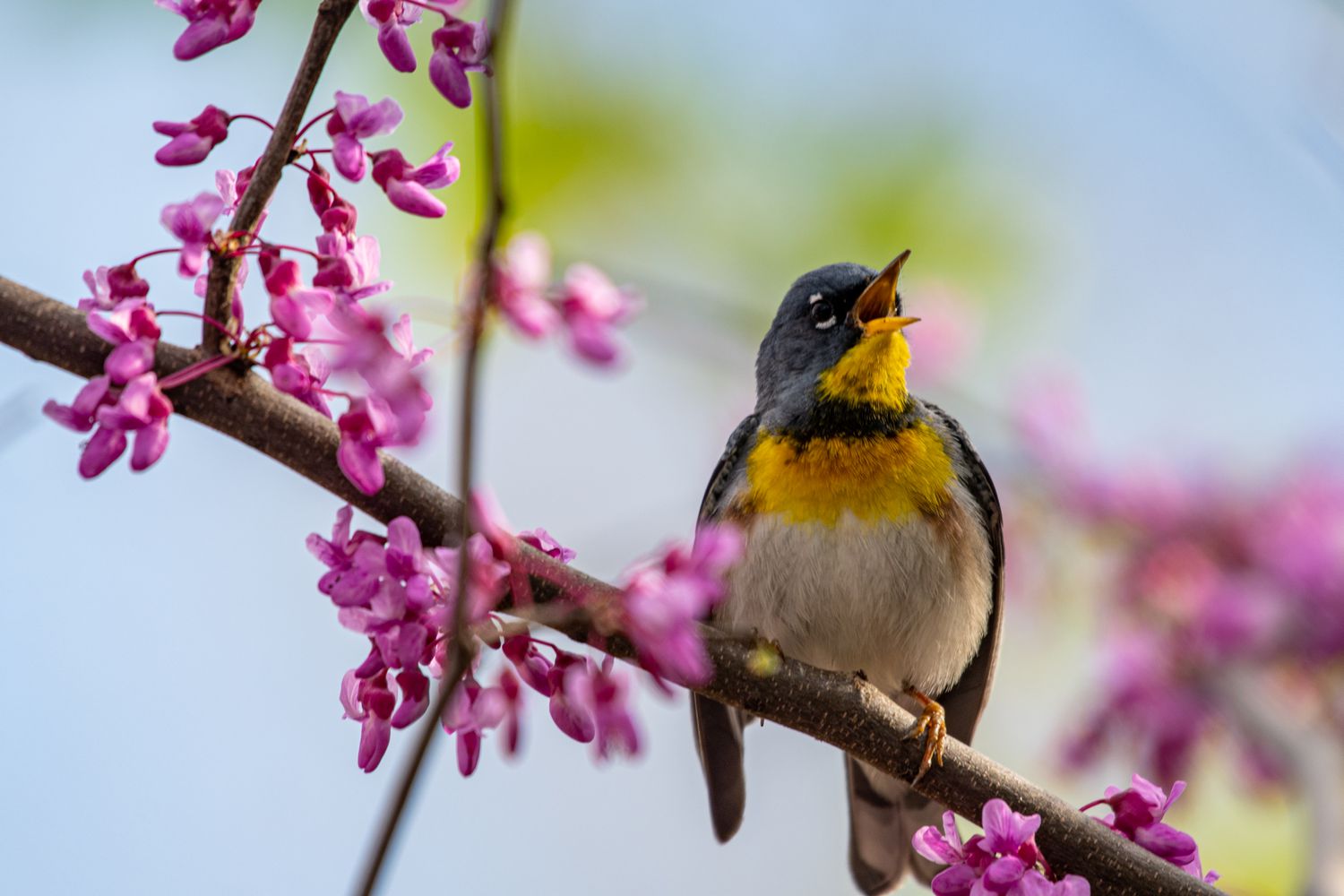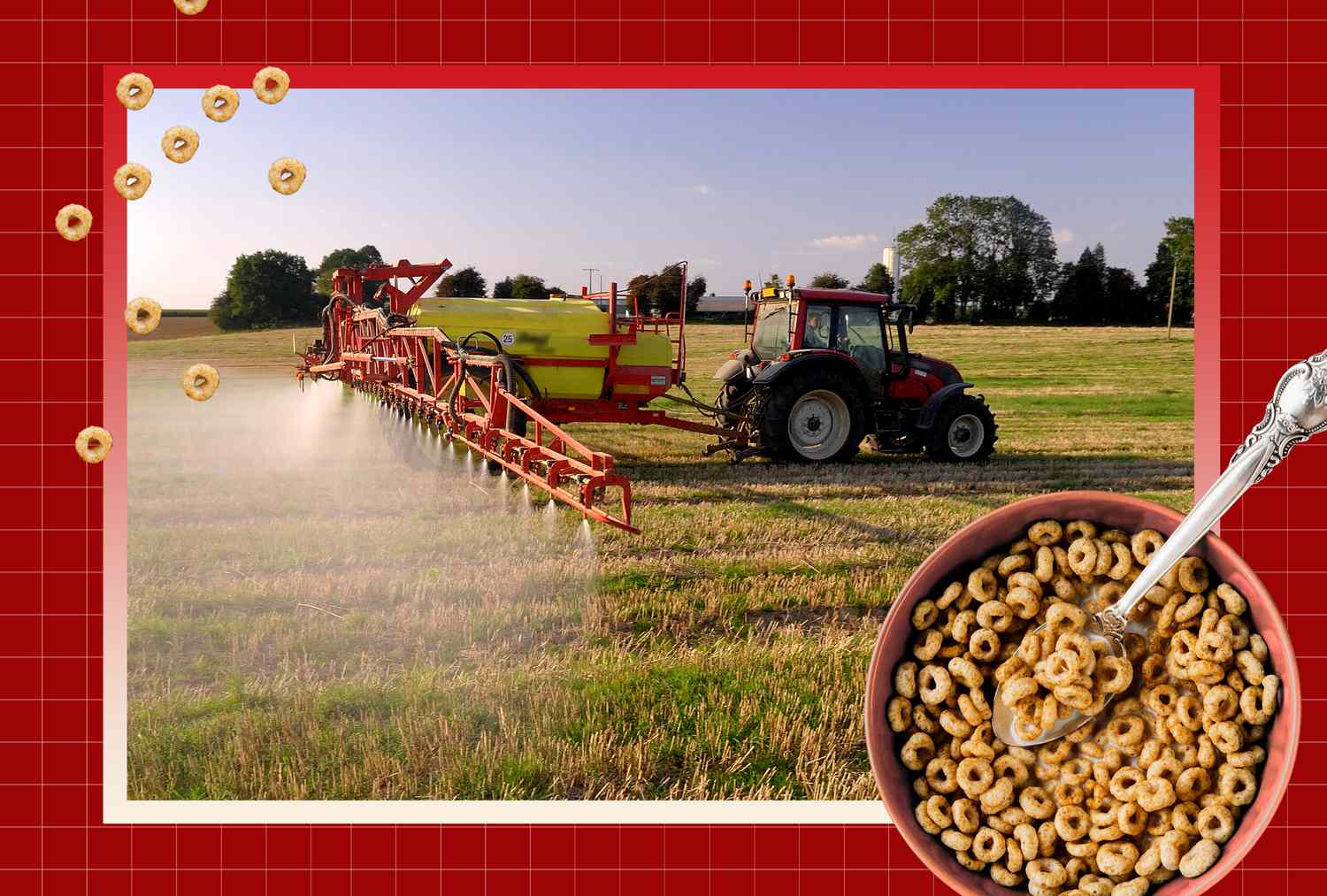
Birds Are Migrating! Here Are Which Ones to Expect and How to Track Them in Real Time
As surely as one season marches into the next, the natural world follows suit and prepares for the changes ahead. When spring arrives, tree leaves unfurl, shoots emerge from the ground, and migrating animals begin their journeys. For the more than 450 species of birds that soar along the migration “flyways” of the United States, spring is when migrating birds depart southern climes for the long trip north to their summering grounds. Some, like the Blackpoll warbler, travel over 2,000 miles on this epic feat.
For anyone interested in migrating birds—from hummingbirds and warblers to sparrows and all manner of other species—we’ve got a dizzying array of knowledge and tools to help us better understand the phenomenon. We’ve come so far, in fact, that anyone with access to the internet can head to Cornell Lab of Ornithology’s BirdCast and see a wide array of migration forecast information and what’s happening in real time. We can learn not only what kind of birds are expected in a particular place at a particular time (see the Migration Dashboard) but also how many birds will be crossing overhead and live radar maps showing birds in flight. What is this magic?!
We spoke to migration ecologist Dr. Andrew Farnsworth, one of the founders of the BirdCast project, who helped shed some light on this remarkable tool.
Dr. Andrew Farnsworth, migration ecologist and visiting scientist at the Center for Avian Population Studies, Cornell Lab of Ornithology, Cornell.
BirdCast Enters the Chat
Farnsworth explains that the project came to life in 1999 before going through several iterations to arrive where it is today. The original intent remains as it is now—to be a migration forecasting tool that can help anyone from meteorologists, scientists, and backyard birders to conservationists and those with aviation interests (and really, everyone in-between).
Although the current website iteration began in 2012, it wasn’t until 2018 that “the alignment of data access, machine learning, big data analytics, and talented staff that the first automated forecast and live migration maps appeared,” he says. The result is a suite of user-friendly migration tools that reveal bird migration in unprecedented ways.
How to Use the Migration Tools
In North America, 70% of bird species migrate, and more than 80% of those species migrate at night—sometimes at volumes of hundreds of millions of birds a night! These are the travelers whose movements BirdCast forecasts and tracks. Here are the tools and how they can be used.
Bird Migration Forecast Maps
BirdCast
On the Bird Migration Forecast Maps page, you will find three U.S. maps with forecasts for the next three evenings. The maps are produced by the Cornell Lab of Ornithology and Colorado State University; they show the evening’s predicted nocturnal migration three hours after local sunset and are updated every six hours.
According to BirdCast, the forecasts are based on models trained on more than 20 years of bird movements detected by the US NEXRAD weather surveillance radar network. The models also employ the Global Forecasting System (GFS) to predict suitable migration conditions.
How to use: Look at your area and compare the color to the level in the intensity legend. The brighter the color, the busier the migration. Any color in the mid-range of orange-yellow tones and above suggests that many birds may be aloft in the area that night (and the following morning may be great for birding!). Also note the precipitation forecasts (outlined and shown in grayscale), which can impact migration. These maps are a helpful way to plan migration activity a few days out, from birding to lights-out messaging to ramping up window collision monitoring.
Live Bird Migration Maps
BirdCast
The Live Bird Migration Maps let you watch, in a way, birds in the night sky in near real-time. Farnsworth explains that the U.S. government operates a network of 143 weather surveillance radars in the contiguous U.S. that scan the atmosphere almost continuously and archive these data in a free, publicly available repository.
“These radars detect many types of ‘targets’ in the atmosphere,” he says, “not just meteorological targets like rain and hail but also biological targets like birds, bats, and insects.” Millions of radar scans were analyzed to determine what were birds and not birds in the radar images—then the BirdCast team built an automated “pipeline” to produce the live maps.
“This pipeline collects the data from the 143 radars, removes the meteorological information using various models we developed and statistical approaches, and then summarizes the biological information—which we know during periods of bird migration is dominated by birds—into graphical form as a smoothed mosaic of migration intensity and flight direction,” says Farnsworth. The result is a video-like map showing swaths of color (birds!) moving across the map in real time, minus a short lag.
How to use: Watching actual nocturnal bird migration (and wind direction) as it happens is a delight for armchair birders and can provide great information for those wanting to know how heavy migration is on a given night. The map’s animation can be started, stopped, sped up, and slowed down. As it moves through the night, the time, number of birds (in millions), intensity color, and wind direction are displayed, changing as time progresses.
Migration Dashboard
Courtest of BirdCast
The Migration Dashboard is a smorgasbord of nightly migration data in your county. It’s a fascinating array of information, updated in real time, where you can see the number of birds in flight and details like their speed and altitude. An especially nifty feature on this page is the list of expected migrants in the area based on the frequency of eBird observations.
How to use: People who monitor urban areas for window collisions use this information to help anticipate window strikes based on clues the data reveals. For example, an increase in the number of birds in flight coupled with a drop in altitude over a city can indicate the right conditions for more birds at risk for collisions. Similarly (and on a happier note), this can also indicate that it might be a great day for birders! It’s also fun to see which birds are expected to travel through your neck of the woods. The date can be adjusted to see historical data, too. If you’ve ever had a particularly birdy day at your feeders, check out the dashboard for the night before and see if it was particularly active.
Local Bird Migration Alerts
Courtesy of BirdCast
If you’re like someone around here (ahem), you may not need Local Bird Migration Alerts because you are glued to BirdCast forecast maps as if they were a soap opera. If your interest is slightly more casual, you can look at the bird migration alerts page and see the forecast maps summarized in easy-to-digest bites. The page will tell you the intensity forecast for the current night—low, medium, or high—and provide information about each level.
As BirdCast points out, besides providing birders with the scoop on local migration, alerts for high-intensity nights serve an important conservation need. They allow for “effective targeting of the most important migration nights in a season, helping determine when to act for maximal effect of conservation actions such as turning off lights when birds are flying at night to avoid luring them towards artificial light and potentially fatal hazards.”
The alerts are currently produced in tandem by Colorado State University and Cornell Lab of Ornithology—they are expressed in units birds/km/night, “indicating the cumulative number of birds that fly within a night across a one-kilometer line transect on the earth’s surface oriented perpendicular to the direction of movement of the birds.”
How to use: Use this tool to find out if birds are migrating in your area tonight (and the next two nights) in low, medium, or high densities. Select your city from the drop-down menu (or use the search bar), and voila. An especially neat part of this tool is that you can subscribe to alerts to receive an email for nights with a high forecast.
What’s Next for BirdCast
Given the remarkable strides the project has made since its early days, we asked Farnsworth what the future holds for BirdCast. “We are a small team, but there are many new ideas we would like to unveil!” he says. Some upgrades they hope to see in the near future include new forecast models with more detailed information about birds landing vs flying, the ability to download county-level data, and more educational materials that the project’s data for applications like lights-out and bird-friendly design programs to protect birds from the hazards of light pollution and reflective and transparent glass.
The team is also working with international partners to bring the magic to Canada, Australia, Europe, and wherever weather surveillance radars operate.










